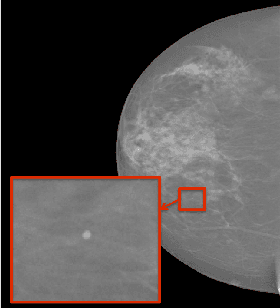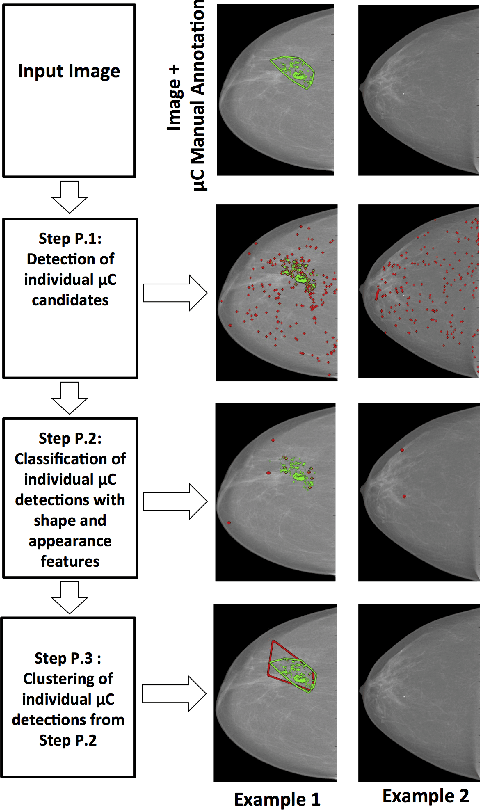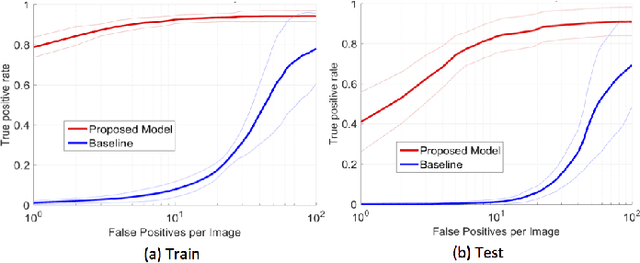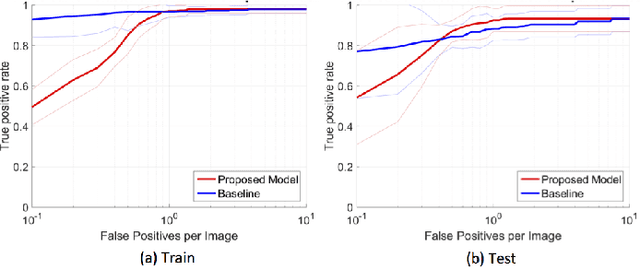Automated Detection of Individual Micro-calcifications from Mammograms using a Multi-stage Cascade Approach
Paper and Code
Oct 07, 2016



In mammography, the efficacy of computer-aided detection methods depends, in part, on the robust localisation of micro-calcifications ($\mu$C). Currently, the most effective methods are based on three steps: 1) detection of individual $\mu$C candidates, 2) clustering of individual $\mu$C candidates, and 3) classification of $\mu$C clusters. Where the second step is motivated both to reduce the number of false positive detections from the first step and on the evidence that malignancy depends on a relatively large number of $\mu$C detections within a certain area. In this paper, we propose a novel approach to $\mu$C detection, consisting of the detection \emph{and} classification of individual $\mu$C candidates, using shape and appearance features, using a cascade of boosting classifiers. The final step in our approach then clusters the remaining individual $\mu$C candidates. The main advantage of this approach lies in its ability to reject a significant number of false positive $\mu$C candidates compared to previously proposed methods. Specifically, on the INbreast dataset, we show that our approach has a true positive rate (TPR) for individual $\mu$Cs of 40\% at one false positive per image (FPI) and a TPR of 80\% at 10 FPI. These results are significantly more accurate than the current state of the art, which has a TPR of less than 1\% at one FPI and a TPR of 10\% at 10 FPI. Our results are competitive with the state of the art at the subsequent stage of detecting clusters of $\mu$Cs.
 Add to Chrome
Add to Chrome Add to Firefox
Add to Firefox Add to Edge
Add to Edge